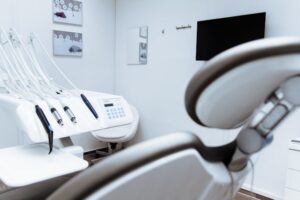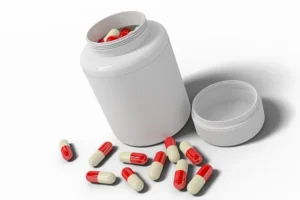
Technology is evolving with time. IoT is one of the advancing technologies that has multiple applications in almost every niche. You can assume a healthcare revolution with some of the IoT applications, in the healthcare industry.
In this article, we have mentioned several applications of IoT in Healthcare that will empower the connected health service space.
Different Applications of IoT in the Healthcare Industry
#1. Connected Contact Lense
With the right blend of sensors and contact lenses, you can detect symptoms of different illnesses which can be exceptional progress of IoT in healthcare.
- Early prediction of diabetes and tear glucose level based on IoT-connected contact lens.
- The Triggerfish CLS can recognize the eyeball size changes, which indicates glaucoma.
- Users will also identify Presbyopia in the near future through a sensor-based contact lens. It is a disease generated by the loss of elasticity of the eye lens.
- Researchers are working to provide medicines to the eyes that would be better than the eye drops.
#2. Connected Inhaler
Asthma patients can identify the symptoms of an Asthma attack within thirty minutes to eight hours with the help of IoT-based smart solutions. A sensor-connected inhaler can alert patients about air dust and climate conditions so they can prevent an attack.
- With the help of a mobile app, a patient can combat breathing issues for a long time.
- It will be easy for the doctors to track the illness status calculate data from the sensors, and suggest to patients accordingly if is there any need to use an inhaler or to take necessary steps.
- Early symptom detection helps patients to save additional hospital expenses.
#3. Glucose Monitoring
IoT applications with wearable or embedded body sensors will monitor and transfer blood sugar level data to mitigate the risk of death by diabetes.
- Physicians can analyze data received on mobile phones or computers through sensors.
- It is easy to monitor HbA1c protein levels.
- Early detection of sugar levels so more lives can be saved.
#4. Hearing Aid
There are millions of people who are having issues with progressive hearing. IoT-based hearing aid applications serve the great purpose of making their lives better, in the healthcare industry.
- If both devices are connected through the internet, one can listen to the doorbell ring from anywhere.
- Turn on/off lights by voice command from remote places.
- Listen to the sound even in a noisy environment.
- Smoke sensors help to detect smoke.
- Listen to different conversations simultaneously.
#5. Blood ClottingTesting
IoT in healthcare devices monitors the blood clotting system on a timely basis to lower the risk of diabetes or stroke.
- Patients can monitor how quickly their blood clots through Bluetooth-enabled technology.
- Anticoagulated patients can leverage IoT applications like blood clot testing to make things easier.
- Mitigate the risk of bleeding issues and brain stroke for diabetic people.
- Doctors can monitor patients from remote places so hospital expenses can be reduced.
#6. Ingestible Sensors
Ingestible Sensors having magnesium and copper coating can activate a signal if patients are not taking medicines or forget to take them at the right time, the healthcare industry.
- Alert patients if they are consuming medicines at the wrong time and save them from the side effects.
- When it comes to mental health, this application is very significant as psychiatric patients rarely take medicines.
- The pressure of taking care of patients on a daily basis is reduced with the help of this application.
#7. Robotic Surgery
To perform surgical operations with high precision, doctors are leveraging IoT-enabled robotic devices that will operate anything inside the patient’s body.
- Doctors will have more control and accuracy throughout the operation.
- Lives can be saved by performing operations from remote locations.
- Cardiac valve repair, gynecological procedures, and more surgeries are taking place with the help of IoT devices.
#8. Interoperability
Many healthcare organizations started gathering a huge amount of data generated through IoT devices, and to manage that data, they are leveraging AI and natural language processing.
- IoT devices exchange data through cloud storage so the same data can be accessed by multiple devices.
- Doctors can discover the precise need for medication with the help of historical data. Ultimately it will lead to improved patient care.
#9. Management
The use of smart tags when it comes to distribution and monitoring will solve all the hassle of management.
- Provide precise information about the environmental conditions like temperature while producing the.
- The regulatory body will be informed via the cloud if there is any wrong distribution of.
- Better supply chain management will cut the overall production expenses.
- Agencies are using RFID (Radio Frequency Identification) for careful allotment.
#10. Nurse Assistant Robots
Smart robots who are dedicated to taking care of individual patients can help to make the treatment highly effective and efficient. On the other hand, they are also assisting nurses in multiple ways such as providing medicine or any equipment, any alerts about a specific task, and much more, the healthcare industry.
- Robots can mitigate the workload of nurses.
- They can communicate with the patients as well to make them feel comfortable.
- Nurses can provide commands as per their schedules.
- These applications can be managed through mobile apps and the web.
Summing Up
While the number of chronic medical conditions is escalating, the IoT in the healthcare sector is in a state of major pessimism.
IoT technology makes the process of well-being simpler and more secure in the pocket and in terms of attainability.






